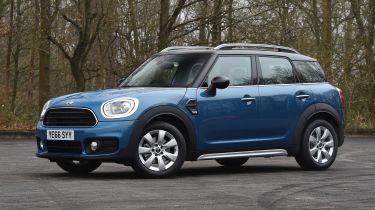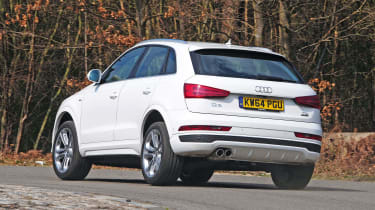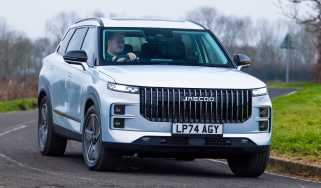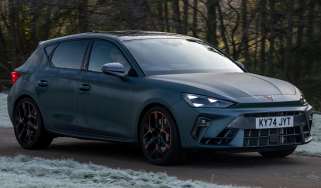Audi Q3 (2011-2018) review
The Q3 offers Audi's premium feel in a high-riding compact crossover package

The Audi Q3 is a practical, well-built and desirable crossover. Its premium feel runs more than skin deep, as the compact Audi 4x4 offers an engaging, fun driving experience and genuine refinement thanks to solid design and engineering. Impeccable Audi build quality is reflected in a cabin that has a truly premium feel, too.
With a full range of safety kit and a desirable badge on its nose, the Audi Q3 is unsurprisingly in strong demand. The downsides? This quality doesn’t come cheap – especially if you go to town on the options – and despite its looks, the Q3 isn’t all that capable off-road.
When it went on sale in 2011, the Audi Q3 was the smallest model in the German firm's SUV range. As the name suggests, it's similar in size to the A3 hatchback, but it features a raised ride height and the chunky styling that have made SUVs and crossovers so popular. It used to be the smallest SUV in the range, but it lost that crown to the Q2 in 2016. But while it's due to be replaced in 2019, it's still an attractive proposition for SUV buyers.
There's some crossover between the Q2 and Q3 ranges, as both can be considered as rivals for cars such as the BMW X1 and X2, Ranger Rover Evoque, Mercedes GLA and Volvo XC40. The Q3 has been around for longer than these rivals, though, so it's not quite at the cutting edge of the class as it once was.
Used - available now
• Audi Q3 vs Volvo XC40 vs BMW X1
There was a facelift for the Q3 in 2015 that added a sharper look to match the larger Q7 and Q5 models, and this boosted standard kit, too. While SE models were part of the line-up for a long time, later in its life these were dropped in favour of higher specs that offer more kit, in an effort to shift cars before the all-new Q3 arrived in 2019.
While Audi has offered petrol-electric hybrid drive in the A3 hatch, we'll have to wait for the new model before there's a Q3 e-tron. In the meantime, the current Q3 has a range of conventional petrol and diesel engines. These comprise a 1.4 TFSI 150PS, a 2.0 TFSI 180PS and a 2.0 TDI in 150PS and 184PS forms.
Depending on which engine you choose, you can get either front-wheel drive or quattro four-wheel drive. The 1.4 TFSI is front-drive only, but the 2.0 TDI 150PS can be had with front or four-wheel drive, and the 2.0 TFSI and more powerful diesel are quattro as standard.
At the top of the range, Audi offered the RSQ3 as a high-performance flagship (although there was no SQ3), which featured the five-cylinder turbo petrol from the TT RS. This was a real pocket rocket in disguise, thanks to the fact it didn't look much different to the regular Q3 range, but had up to 362bhp and sports suspension to help it get round corners faster than a high-riding crossover should.
Sport, S line and Black Edition versions make up the final Q3 line-up, while Audi offers a wide range of optional extras to help you tailor the Q3 to your needs. Either way, the Q3 is well equipped in all of these trims, although it doesn't benefit from the very latest cutting-edge tech that Audi offers on the rest of its range. That will have to wait for the all-new Q3, which arrives in 2019.
More reviews
Car group tests
In-depth reviews
Which Is Best
Fastest
- Name45 TFSI 245 Quattro S Line 5dr S Tronic [Leather]
- Gearbox typeSemi-auto
- RRP£46,015









